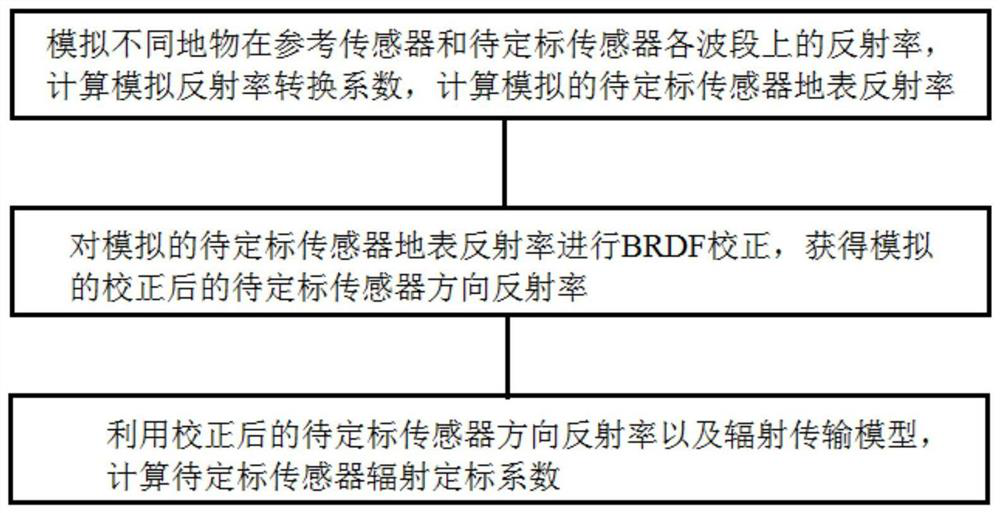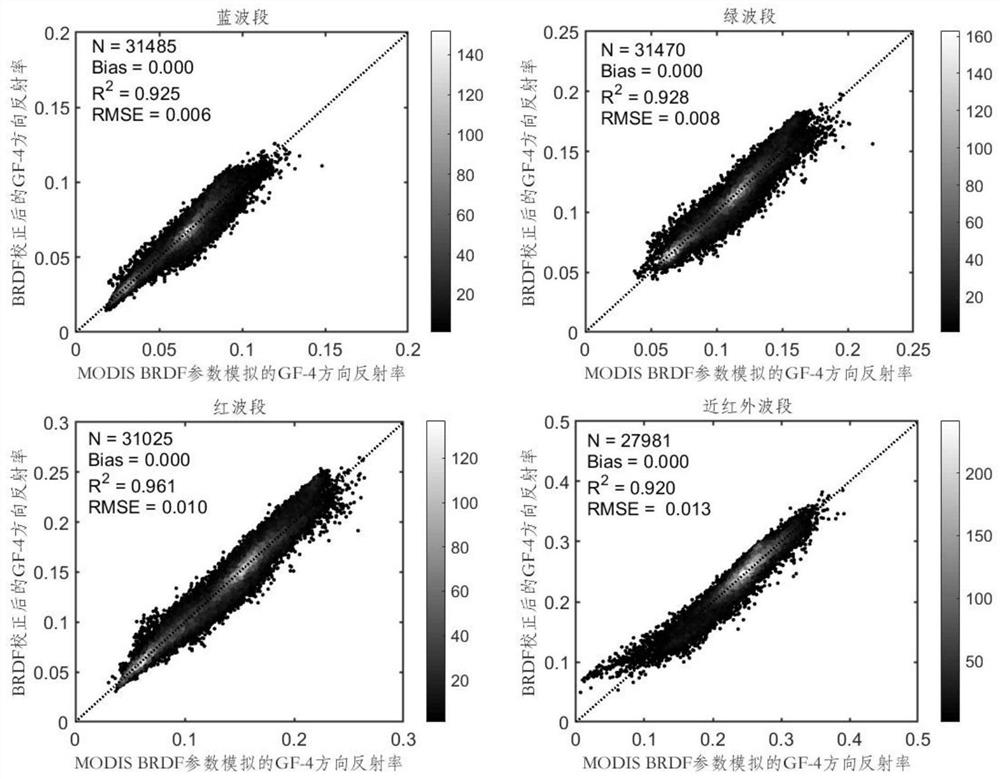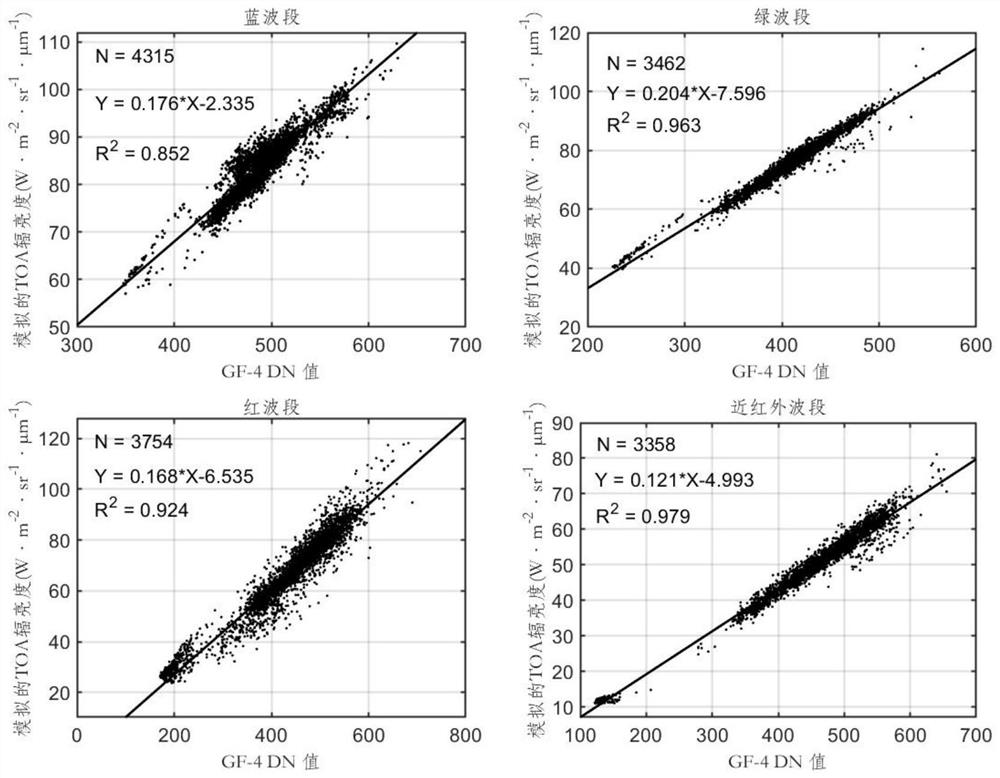Automatic cross radiation calibration method for wide-field-angle multispectral sensor
A technology of radiometric calibration and wide field of view, which is applied in the field of satellite remote sensing, can solve the problems of mixed pixels, large difference in spatial resolution, few sensors with wide field of view, etc., and achieve the effect of improving stability
- Summary
- Abstract
- Description
- Claims
- Application Information
AI Technical Summary
Problems solved by technology
Method used
Image
Examples
Embodiment 1
[0048] In this embodiment, the sensor to be calibrated is GF-4 PMS, and the reference sensor is Landsat-8 OLI.
[0049] Such as figure 1 As shown, an automatic cross-radiation calibration method for wide-field-of-view multispectral sensors includes the following steps:
[0050] Step 1. Simulate the reflectance of different ground objects in each band of the reference sensor and the sensor to be calibrated, and use the multiple linear regression model to calculate the simulated reflectance conversion coefficient. According to the reflectance conversion coefficient and the real surface reflectance of the reference sensor, the simulated surface reflectance of the sensor to be calibrated is obtained.
[0051] Step 1.1, using the measured spectrum of different ground objects and the spectral response function of the sensor to be calibrated and the spectral response function of the reference sensor to simulate the reflectance of different ground objects in each band of the sensor t...
PUM
 Login to View More
Login to View More Abstract
Description
Claims
Application Information
 Login to View More
Login to View More - R&D
- Intellectual Property
- Life Sciences
- Materials
- Tech Scout
- Unparalleled Data Quality
- Higher Quality Content
- 60% Fewer Hallucinations
Browse by: Latest US Patents, China's latest patents, Technical Efficacy Thesaurus, Application Domain, Technology Topic, Popular Technical Reports.
© 2025 PatSnap. All rights reserved.Legal|Privacy policy|Modern Slavery Act Transparency Statement|Sitemap|About US| Contact US: help@patsnap.com



